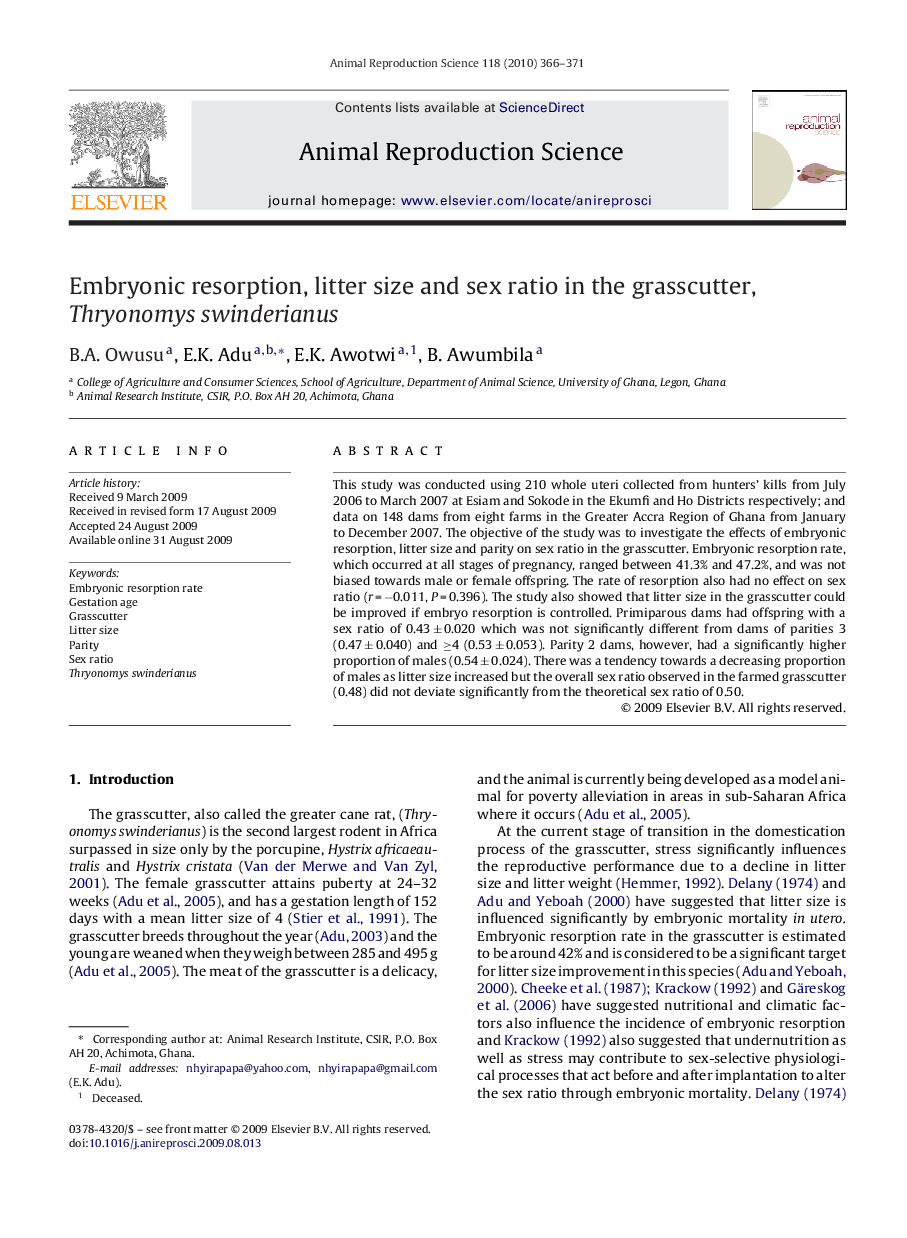| Article ID | Journal | Published Year | Pages | File Type |
|---|---|---|---|---|
| 2073774 | Animal Reproduction Science | 2010 | 6 Pages |
This study was conducted using 210 whole uteri collected from hunters’ kills from July 2006 to March 2007 at Esiam and Sokode in the Ekumfi and Ho Districts respectively; and data on 148 dams from eight farms in the Greater Accra Region of Ghana from January to December 2007. The objective of the study was to investigate the effects of embryonic resorption, litter size and parity on sex ratio in the grasscutter. Embryonic resorption rate, which occurred at all stages of pregnancy, ranged between 41.3% and 47.2%, and was not biased towards male or female offspring. The rate of resorption also had no effect on sex ratio (r = −0.011, P = 0.396). The study also showed that litter size in the grasscutter could be improved if embryo resorption is controlled. Primiparous dams had offspring with a sex ratio of 0.43 ± 0.020 which was not significantly different from dams of parities 3 (0.47 ± 0.040) and ≥4 (0.53 ± 0.053). Parity 2 dams, however, had a significantly higher proportion of males (0.54 ± 0.024). There was a tendency towards a decreasing proportion of males as litter size increased but the overall sex ratio observed in the farmed grasscutter (0.48) did not deviate significantly from the theoretical sex ratio of 0.50.
